Small, but very dangerous for the enemy
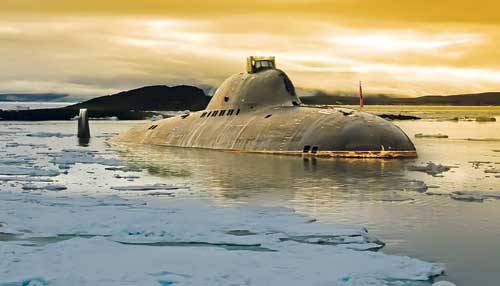
At the end of 1958 of the year, when state tests of the first domestic nuclear submarine were held, the State Committee for Shipbuilding announced a tender for the development of proposals for the next-generation submarines.
As a result, SKB-143 (now the Malachite SPMBM) appeared to be designed, which were then embodied in the ships of the second generation of 671 and 670 projects. One of the results of the competition was the development of the project idea of creating an automated small displacement submarine and its preliminary appearance was determined. The author of the idea is one of the winners of the above-named competition, talented designer Anatoly Borisovich Petrov, who led a group of young scientists.
FROM WHAT IT STARTED
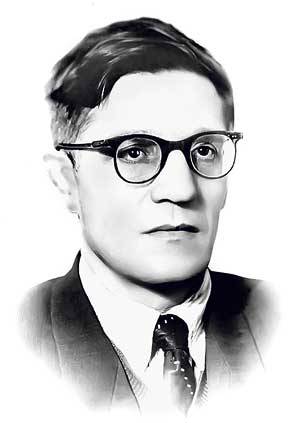 Petrov Anatoly Borisovich
Petrov Anatoly BorisovichThe chief of the bureau and the chief designer of the first national nuclear boat, Vladimir Peregudov, warmly supported the idea of the ship, told Academician A. P. Alexandrov about it and asked him to accept A. B. Petrov with a report on this ship. And in the early spring of 1959, Anatoly Petrovich Alexandrov received Petrov and the author of these lines at the Institute of Atomic Energy. The conversation lasted more than two hours. The academician listened very attentively to us, asked a lot of questions, thinking with us, joked, kept simple and easy. And Petrov and I did not feel any pressure from his enormous authority. He did not show the slightest shade of superiority, condescension or teaching. It was a conversation of colleagues and like-minded people. Anatoly Petrovich asked to bring tea and continued to ask us briskly about the features of the new ship. Hearing about the single-hull architecture, a small reserve of buoyancy and the associated rejection of the requirements of the surface flooding, he said that it was healthy and organic, but the sailors would not accept this.
As a result, Aleksandrov asked to send materials to the developments, promised full support for the project. It was a late hour. Upon learning that we were leaving the same day, he ordered to take us to the train.
In June, A. P. Alexandrov, 1959, directly at the SKB, organized a large meeting with the participation of Academician V. A. Trapeznikov, Director of the Institute of Automation and Remote Control, and the entire management team of the bureau. Works turned.
The chief designer appointed Mikhail Georgievich Rusanov. It was an extremely good choice. Rusanov deeply imbued with the design solutions of the ship and began to implement them with extraordinary perseverance and enthusiasm. At first, he worked together with A. B. Petrov, but then they parted ways. Petrov, an unusually talented and gifted engineer, could constantly invent and propose new and new ideas, which in many respects determine the main directions of development of submarine construction. However, he was not given to implement them, to constantly eliminate the next technical and organizational problems. This brilliantly performed Rusanov. He assumed enormous responsibility and made it without exaggeration the meaning of his existence. He gave all the forces and time allotted to him to the creation of this ship.
The main innovative technical solutions of the project, which determined its appearance, were as follows:
- complex automation of technical equipment, crew crew threefold, single central ship control console, titanium hull;
- reactor power plant with liquid metal coolant, the use of alternating current frequency 400 hertz, block steam turbine installation, the use of pop-up rescue chamber for all personnel;
- the use of split rudders and combined retractable devices, the use of hydraulic torpedo tubes.
And all this should be implemented subject to a small displacement.
Dozens, if not hundreds of various organizations - design bureaus, factories, research institutes took part in the creation of the ship. They were captured by the novelty and unusualness of the project, the opportunity to creatively solve interesting technical problems, and they enthralled the enthusiasm and dedication of SKB-143 employees and, above all, the chief designer Rusanov. New productions and technologies were developed, in particular, titanium metallurgy for serial construction, automation and automation of technical means, small-scale reactor plant with liquid metal coolant and block steam-turbine plant of high power, new radio-electronic hydroacoustics, radar, navigation and radio communications. It was possible to create the latest equipment, instruments of control and management, new design schemes for all systems and devices of the ship.
It can be said that the 705 project has raised the level of scientific and engineering developments in shipbuilding, power engineering, radio electronics, as well as the work culture in factories, pilot plants and research laboratories to a new level. And all this happened in the 60s of the last century, and we did not have digital electronics and computers at our disposal. When, in 1999, the author of these lines made a report on the 705 project at the Warsaws-99 International Symposium in London, those present, and this is the elite of world shipbuilding, stood up. As a result, such a ship was born. The first submarine of the 705 project was built at the Leningrad Admiralty Union in the 1971 year, the last in the series, the seventh in the 1981. Our fleet received four ships from the Leningrad Admiralty Association, three - from the Northern Machine-Building Enterprise.
Original technical solutions made it possible to create a nuclear submarine with a displacement of just over two thousand tons with tactical and technical characteristics that are not inferior to the performance characteristics of any other nuclear submarine.
For the first time in the world, titanium alloy was used in the construction of a series of warships. This served as a powerful impetus to the development of titanium metallurgy, the development of new structural materials based on this metal.
The first submarine has entered combat operation with complex automation of basic technical means, a small number of personnel, an original layout of the shelter compartment, limited by bulkheads designed for full overboard pressure, and includes the main command post, residential and service premises. Above the compartment was a pop-up rescue chamber for all personnel.
New was the decision to use electrical equipment with a frequency of not 50 hertz, as it was made, but 400 hertz, which ensured the creation of small-sized electrical equipment. The liquid-metal coolant at the power plant made it possible to drastically reduce its size and weight, and also significantly improve maneuverability in terms of recruiting and power release. At the same time, the main power plant (GEM) required a new approach to operating the reactor, since constant operation of the pumps of the 1 circuit was necessary because of the threat of alloy freezing and plant failure. This complicated the basic support and maintenance of the ship in the database. It was right to say that the high technical level of the ship and its outstanding combat characteristics demanded a new, more advanced organization of service and basing.
During the construction and operation of submarines of the 705 project, the bureau carried out continuous intensive work on a constant search for design and engineering solutions aimed at improving equipment reliability and also reducing noise. This concerned, first of all, the systems and devices of the power plant (steam fittings, attachments for the installation of steam pipes, leaks of steam generators, etc.).
Below are the main elements of the submarine of the 705 project (according to the NATO classification - Alfa) in comparison with the data of American nuclear submarines of that time.
These tables eloquently testify to the extremely high performance of the submarines of the 705 project.
LIGHT, FAST AND MANOVA
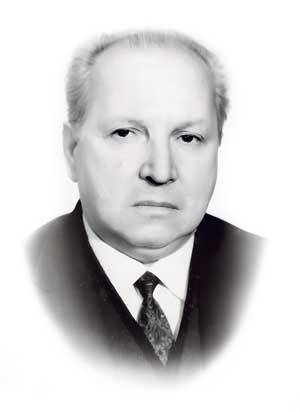 Rusanov Mikhail Georgievich
Rusanov Mikhail GeorgievichThe operation of these submarines has confirmed their high performance characteristics. Despite many unfavorable circumstances specific to this series of ships - the lengthy construction period, the extremely poor quality of the infrastructure at the base sites (here you must add the novelty and sharp difference from all previous nuclear submarines), Project 705 submarines proved to be reliable and efficient ships . The intensity of their use was quite high, they regularly made autonomous trips, participated in almost all exercises and maneuvers of the Navy at the Atlantic theater, showed high efficiency, each had several contacts with foreign submarines and, thanks to its high maneuverability and speed, gained certain advantages over them. In 1983, the Navy, which included project 705 submarines, was recognized as the best in the Navy navy.
Possessing a maximum travel speed comparable to that of anti-submarine torpedoes, Alpha could develop a full stroke within one minute from the moment the command was given. This allowed her to enter the shadow feed sector of any surface ship and submarine. According to the testimony of the submarine commanders, it could turn almost "on the patch".
There was a case in the North Atlantic when one of the Alphas hung on the tail of a NATO nuclear submarine for desperate attempts to leave for more than 20 hours. Tracking stopped only on command from the shore.
According to the testimony of the crews of the submarines, which highly appreciated the fighting qualities of these ships, the submarines of the 705 project were superior to other submarines by the following properties:
- a significantly higher readiness for going out to sea from the initial state when the GEM is not commissioned due to a higher (almost three times) input speed, a significantly greater maximum speed, opening up the possibility of rapid deployment to the destination areas;
- high maneuverability, allowing more successfully to evade from all types of existing foreign anti-submarine torpedoes (before adopting the US Navy torpedoes MK-48) and providing a sufficiently long tracking of foreign submarines;
- automation of ship control processes, weapons and the power plant, even for the level of that time, was efficient and reliable, the service life of the automation equipment for general ship systems and the power plant on all ships was more than doubled.
Nevertheless, the construction of these submarines was discontinued and the project did not receive further development. This was largely due to the premature selection of an unprocessed reactor with a liquid-metal coolant (the ground stand of the PUU was never created) and, unfortunately, affected the fate of the advanced and unique design solutions of the submarine of the 705 project. The general level of the state of domestic industry and production technologies, the conditions of infrastructure and basing, as well as the training of personnel and organization of service in the fleet could not ensure the full and reliable operation of these ships - they were too ahead of their time.
Since 1986, the use of nuclear submarines of the 705 project, as well as other submarines and the fleet as a whole, began to decline, they were not repaired, the turnaround time was out, the automation resources were exhausted, the reactor core resource was less than 30%. Since the beginning of 90, the fleet financing has practically ceased, which resulted in the actual destruction of these remarkable, far ahead of their time ships.
It remains only to express regret that not a single ship of such an outstanding project, which aroused the enthusiasm and envy of our probable enemy, was left at least as a monument-museum to the creative feat of the constructors of the Malachit SPMBM, the contractors and crews of these submarines.
The design ideas and technical solutions for the development of the 705 submarine served as the basis for many constructive and technological solutions when creating submarines of the third and fourth generations.
The fate of the ships was both beautiful and tragic. The same fate befell many of the authors and developers of the project, including the chief designer of the project, M. G. Rusanov, who has devoted his whole life to him. It can be said without exaggeration - without purposefulness, energy, erudition, experience and professionalism, the power of persuasion, and the organizational abilities of Mikhail Georgievich, the 705 project ship would hardly have been created. In 1974, he was relieved of his post as chief designer.
This also applies to Anatoly Petrov, whose design idea and concept of an automated small-displacement submarine formed the basis of the development. It's a shame that his name did not receive the corresponding recognition.
REMAINING ONLY REWARDS AND MEMORIES
The submarines of the 705 project are an example of the creative take-off of domestic and world submarine shipbuilding. This was one of the most outstanding achievements of the bureau, which our likely adversaries also appreciated. There were no analogs of 705 in submarine shipbuilding, and not only in Russia. “The remarkable Alpha was the submarine of the 705 project, a prominent American naval historian and analyst Norman Polmar in the book Submarines of the Cold War. These submarines opened the way to a new direction in the creation of multi-purpose submarines - complex-automated high-speed and maneuverable ships of a small displacement. Unfortunately, the end of the intensive operation of a series of submarines of 705 and 705K projects, understanding the experience of creating these ships and their further improvement coincided with the collapse of the Soviet Union, the collapse of industry and the fleet. One of the 705 submarine commanders, V. T. Bulgakov, wrote: “During 10, the building was completed, commissioned into the Navy, and without a single shot, the division of unique, unparalleled ships in the world with a hull and with a limited shelf life was destroyed.”
The cast into the future did not receive reinforcements today, submarine shipbuilding is developing further along a more traditional path. The modern level of advanced technologies shows the promise of Alpha’s ideas and gives hope for its further development.
The high scientific and technical level achieved during the creation of the nuclear submarine of the 705 project was marked by a decree of the Presidium of the USSR Supreme Council on December 16 of 1981. SPMBM Malachite team awarded the Order of the October Revolution, and 113 employees received orders and medals. The orders of Lenin were awarded to M. G. Rusanov and L. A. Podvyaznikov. Among the co-authors V. V. Romin, replacing M. G. Rusanov as chief designer in 1974, became the winner of the Lenin Prize, and the State Prize was received by Yu. A. Blinkov, V. V. Krylov, V. V. Lavrentiev, KA Landgraf and V.V. Borisov.
Here are the most distinguished of those awarded: A. B. Petrov, Yu. V. Sokolovsky, N. I. Tarasov, I. M. Fedorov, B. P. Sushko, M. I. Korolev, L. V. Kalacheva, V. G. Tikhomirov, V. I. Barantsev, V. P. Bogdanovich, B. V. Grigoriev, I. S. Sorokin, I. N. Loshchinskiy, V. A. Ustinov, B. M. Kozlov, S. P. Katkov, V. G. Borodenkova, Yu. A. Chekhonin, V. A. Danilov, I. M. Grabalin, I. M. Valuev, B. F. Drones, V. Ya. Veksler, G. N. Pichugin, N. A. Sadovnikov, V. V. Yurin, O. A. Zuev-Nosov, V. R. Vinogradova, Yu. D. Perepelkin, O. P. Perepelkina , M. M. Kholodova, A. I. Sidorenko, V. A. Lebedev, G. I. Turkunov and a number of other employees of the bureau.
It should be noted also the rewarding of a large group of specialists from counterpart enterprises, science and the Navy, and about 40 of them were awarded the Lenin and State Prizes.
Creating a ship project 705 convincingly showed the high potential of science and industry of the Soviet Union 60-70-s.
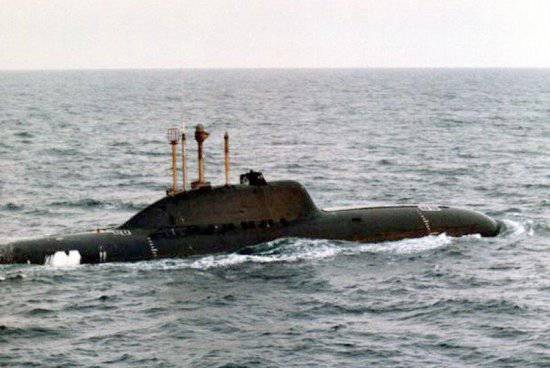
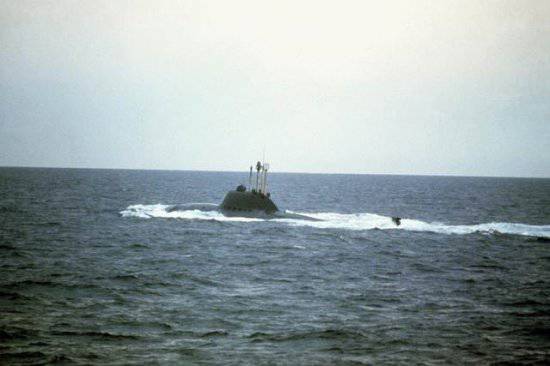
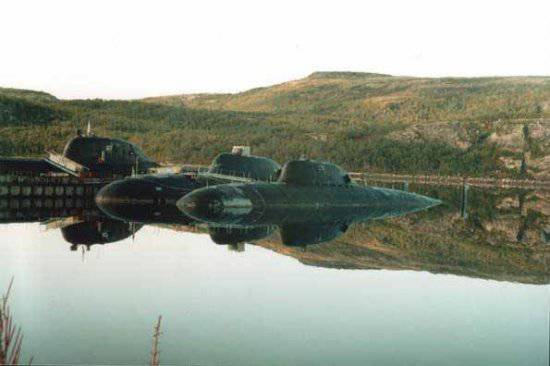

Information